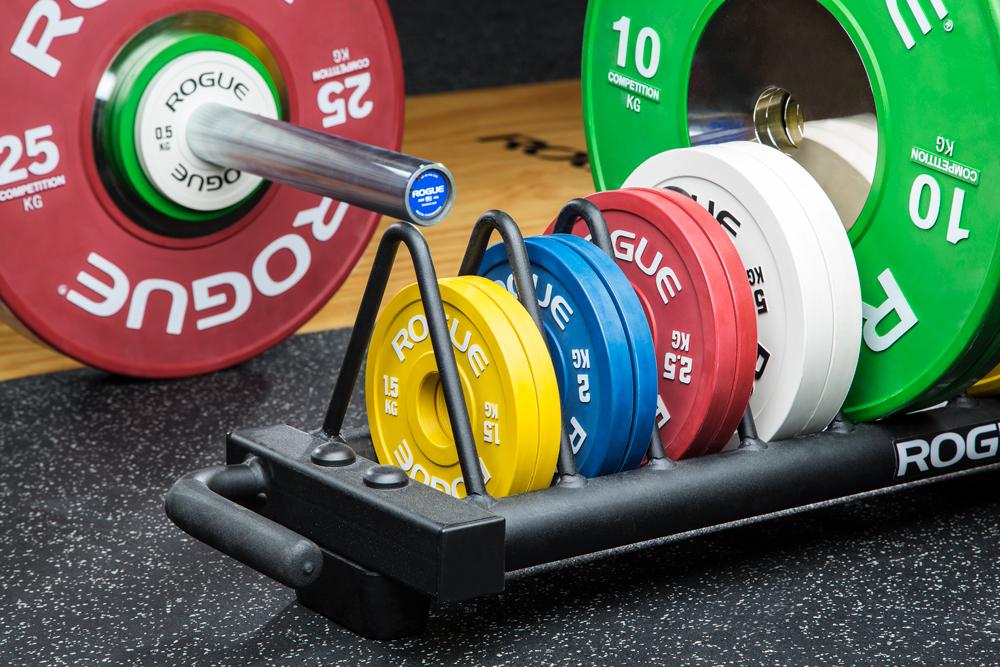How heavy are powerlifting plates?
The plates which are used in competition are mostly the red 25kg plates which equate to 55lbs. This is 5kg more per plate than most people usually suspect as they are used to using 45lb/20kg plates.
Powerlifting
Powerlifting is the sport of the total. Your total consists of three lifts. These are the bench press, squat, and deadlift. For each lift, you will get three attempts to establish your best weight. The best attempt for each lift will be counted towards your total. Based on your total you will be ranked against your competitors.
A big difference in lifting weights in the gym is that you will be judged. Three referees will have a close look at your performance. They decide whether your actions comply with the rules of the federation you are competing in. Two out of three judges have to agree for your attempt to qualify. You need at least one qualifying attempt for each lift to make it on the board. Otherwise, you will be disqualified.
What you see on YouTube
When you see powerlifters or weightlifters on YouTube you will mainly see red plates. International lifting competitions are standardized to kilograms. One red plate weighs 25 kilograms which equate to roughly 55 pounds. The average plate in your local gym weighs 45 pounds of you are training in the US.
Type of plates
The most common types of plates are:
Even though their name might suggest Olympic plates are not used in the Olympics. Olympic and bumper plates are what you find in most training facilities. They usually have the same color of black and are thrown together depending on how your gym stocked up on them. They can considerably vary between their real weight and what is stated on the plate.
Calibrated steel plates and competition bumper plates are what you on the television and in official competitions. They are quite a bit more expensive than usual plates as their weight has to be exact which complicates the production process. They also come in different colors.
Steel plates are used for powerlifting as you fit more weight in the barbell and the weight is not being dropped from overhead. The bar also does not spin during the lift so there is less need for the plates to accommodate for that.
Competition bumper plates are usually used in weightlifting competitions. They are calibrated and made of rubber and a metal core. This way they behave better when the barbell spins during the movement and are more forgiving to the floor when dropped from overhead.
Fractional plates
Fractional plates and change plates are plates which come in smaller increments than 2.5 kg. They are used either for micro-loading in training or small incremental jumps in competitions. Without them, the minimum weight to increase airy would be 5kg which can be too much of a step up in elite level lifting.
2.5 kg
This is the smallest plate you will find in any gym. Some stock fractional plates, but that is rather the exception than the rule.
5 kg
5 kg plates are the next step up and they are usually white. They are usually smaller in diameter than other plates with a few exceptions.
10 kg
In most standard sets 10kg plates have the same diameter as other plates. In competition, they are indicated by the color green.
15 kg
15kg plates are also used, but you don’t see them as often. They are indicated by the color yellow.
20 kg
The 20kg plate is usually the go-to plate in your local gym. In competition, this weight is indicated by the color blue.
25 kg
25kg plates are the bread and butter of professional lifters. When you start using these comfortably in training you have made it to the intermediate stage of your lifting career. They are indicated by the color red. In competition there is a strong bias towards them as using them means less changing of plates and a smoother progression between lifters.
50 kg
50kg plates do exist, but you will seldom see them in raw competitions. They have their use in Strongman competitions for very heavy time carries or in equipped lifting when the stakes go into the 400kg and more range. You will be hard pressed to find a gym near you which sticks these.
How heavy are powerlifting plates
The plates you see in the videos you watch are mostly 25kg each. This is why in some instances it might look like they use fewer plates than you expect as you assume they are the twenties.

